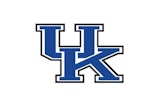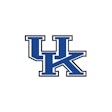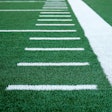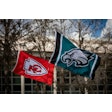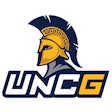
They may be the most important physical attribute to athletic performance, yet the most overlooked. Human eyes — and their relationship to brain function — are the focus of Chris Andrews, who grew up in a family that salvaged a behavioral optometry company not once, but twice, over the past 25 years and has continued the legacy as president of Mishawaka, Ind.-based Bernell Corporation since 2017. Twice over the past three years, Andrews has donated vision-training equipment to the athletic department at his alma mater, Murray State University, and is helping other schools and pro franchises see the benefits of the technology, as well. Senior editor Paul Steinbach asked Andrews to do the same for AB readers.
What’s your background at Bernell?
I grew up with it. I’ve essentially worked for the company since I was a 12-year-old kid. I worked for the company out of undergrad. Then I got my MBA and worked in the consumer packaged goods industry, but continued to consult for the company. I ended up deciding to leave the CPG industry and come back to ensure that the company continued on for the next generation. It’s been something that we’re very passionate about. There are about 46,000 optometrists in the U.S., and less than 5 percent of those do vision therapy or vision training. That’s the area that we support. We are the company that manufactures the majority of all products that are used by this specialty niche group of optometrists. We support everything from them working with children with pediatric binocular vision issues to adults who suffer neurological events — strokes, traumatic brain injuries, concussions — and have had a visual field change, to rehabilitate those. And then our products also are used by colleges and professional teams to do sports vision training with their athletes.
Can you define behavioral optometry for me?
Absolutely. It’s true in sports, just as it is in your regular vision, that only 20 percent of your vision comes from your eyes. Eighty percent of your vision occurs in your brain. And it makes sense when you think of the fact that you have two cameras that are on at all times taking two different image sets and angles, and then having to make sense of two different images for your processing system. That is where our products and what we do comes into play for people who have visual issues that are not eye health issues, but for some reason there is a visual deficit in the information processing. They utilize our products to rehabilitate the eyes in the brain. Kind of like physical therapy, if you will, but instead of working muscles, they’re working the eyes together to reestablish those pathways and those connections.
We’re not talking about training the muscles that control eye movement.
Not at all. It’s the brain. I mean, 80 percent of the perceptual information that we use in sports, that input, comes from our eyes. And yet what is shocking is whenever you go to most colleges and even professional teams and ask them, “What do you do for vision and for vision training?” the majority of them don’t have a clue what we’re talking about. They’ll point me to an acuity chart on the wall and say, “That’s what we test, to see if they can read that.”
Are we talking about the classic eye chart with a big capital E at the top?
Yep. But it’s amazing how few understand anything about vision, or understand where it can be a competitive edge or deficit to an athlete. They think, and the general public thinks this as well, that if you have 20/20 vision, you have perfect vision, and it couldn’t be further from the truth. Having 20/20 vision means that you have average vision
What does that terminology even represent?
Where that all comes from is that the average person can read a line on the acuity chart at 20 feet. That’s their best line that they can see. If you think about that in the sports world, that’s just one visual skill. There are dozens of visual skills that are important, and they can be important by the sport. The average Major League Baseball player has an acuity that’s 20/12 or better now. It’s not a just a happenstance. They have better visual acuity than most people, because they need it in order to hit a baseball. But it’s one of those things that often is just not dug into any further.
If baseball players are often 20/12, what is the 12?
For somebody who can see 20/12, that means that the lowest-level line that they can read at 20 feet is the same lowest-level line that an average person can read at 12 feet. So even though they’re farther back, they have a sharper visual clarity to where they can see smaller objects. An average person would have to move up eight feet to be able to see those same things. It’s the same concept working the other way. If you have 20/40 vision, then that means that you can see at 20 feet what the average person could see at 40 feet.
How early in a sports career do we see vision disparities making a difference?
Most kids, even high school age, have never had an eye exam in their life. They have relied on the school nurse or a pediatrician or a basic exam of acuity at some point to be the only exam they’ve ever had. It’s mind-boggling, to be honest. You’ll often see kids who in high school are the dominant athlete. They’re head and shoulders above their competition, because they’re physically gifted — they’re stronger, they’re faster — but then when they go to the collegiate level, they fall flat. Everybody wonders why they couldn’t quite cut it at the next level, and oftentimes it’s the intangibles, such as vision. They had such raw talent and physical strength and speed that they could overcome those deficits at a lower level, but when they got on a level where everybody was strong, fast and gifted, they were now at a deficit, because their intangible skills weren’t as good.
How did you reconnect with Murray State?
I have been working with Eric Frederick, the head athletic trainer at Murray State, and the athletic director, who’s now moved on to Wichita State, Kevin Saal. We connected at a March Madness second-round alumni event and talked about how I felt that Murray State had an opportunity to take advantage of something that many schools at the upper tiers are starting to incorporate, but that most colleges still do not — and that is sports vision training. I told them that I would like to get more involved with athletics, with the caveat that instead of just donating money, I was going to donate equipment and start to work with the athletic trainers to understand how they can utilize this equipment with the athletes. In my position with the company that we have, and as an alum, I felt it was a great opportunity to give back to my school, to help these athletes — not just on the court, but also off the court by helping to improve their vision. That’s our passion. That’s what we care about. That’s why I came back to run the company.
What exactly did you donate?
They’re called Senaptec Strobes. They’re stroboscopic glasses. Basically, these glasses have an LCD screen in them that is clear, translucent, but whenever we put a pulse of electricity into the lens, it goes from clear to being completely opaque and then back to clear. And we can control that speed. The athlete wears these glasses and practices in their sport while inducing a visual handicap that causes the brain to have to learn how to function with less information, to become more efficient at how it processes information. Once you take the glasses off, everything slows down, so it makes it easier on the athlete. I also gave one of our trainers a Senaptec Swift Touch, which is a wall-mounted training device for hand-eye coordination. And then my recent donation was a much bigger donation. This is really what gives Murray State something that puts them on the same level as some professional teams and some of the upper-tier colleges. It’s a Senaptec Sensory Station. It was originally created by Nike, which had a vision about 15 years ago of incorporating sports vision training in athletic training centers across the U.S. It would allow them to test 10 visual skill sets of all athletes and put it into a dynamic database to create normative data on athletes and how well they did at each one of these skills. I think to date now more than 70,000 athletes have been tested on this. So, with the sensory station that Murray State has, we can now test our athletes and in 20 minutes get an understanding of their skill sets across these 10 areas of vision and how their skill sets compare to other athletes in their sports and their position at their level.
Can you give an example of what it can do for Murray State?
I can take a Murray State quarterback, who is playing Division I FCS, and compare his skill sets to other quarterbacks on the Division I level, on the professional level, at the elite pro level, and be able to measure and tell what percentile ranking that quarterback has in these different skills, and also understand what skills are most important to that position. So, it gives you an advantage. Instead of just training across all skill sets, by focusing on your deficits and on your areas that are most important to your sport and your position it will have the most impact in your training.
You’ll be able to prescribe specific exercises to address those deficits?
Correct. We started off with basketball, and they’re going to be rolling into other sports and starting to build up the protocols for assessing, creating baselines, and then also tracking the athletes as to where they’re making improvements as time goes on.
Has anything surprised you in the process so far?
Murray State is known for basketball. We’ve had tremendous success in basketball throughout the years, and last year was no exception. We won over 30 games. Well, with that, LSU came calling, and they were able to recruit our head coach, as well as most of his staff and even some players to go to LSU. So, we had a full rebuild at Murray State. We were very fortunate that Steve Prohm came back to Murray State to take on our head coaching position, but he had to go out and recruit 12 scholarship athletes, because we only had one scholarship athlete who came back from last year’s team. He and the staff did a phenomenal job. In under 45 days, I think, they filled all of those spots. Thankfully the transfer portal worked in our favor. But one of the things that was interesting is we put all these athletes through the protocol, and we found a number of athletes who were scholarship athletes coming from other schools who had such poor vision that they needed contacts just to be able to see clearly. We discovered that they had never had an eye exam before, and they were playing at the Division I level. So, this year they have already been fitted with contacts and are now seeing clearly for the first time. They didn’t know any different. They thought that that’s just how everyone sees. It’s exciting because, again, this is something that not only is going to help them on the court, but what a life-changing thing to be able to see clearly. One of the things that’s important to us as a company, but also to Murray State, is that we want to develop student-athletes, but also to develop them as individuals. It’s very prideful whenever we have athletes who excel on the court, but also in the classroom. We’re excited to already be seeing some of the results coming through and to see this build up as we get more buy-in from the coaches, the players and the athletic training staff.
How do players access the equipment?
Our team at State is incorporating this as a station in the strength training program. Just like you would move from different sets of different workout activities, they’re making the sensory station a training stop, and they’ll spend 45 seconds or a minute training their visual skills in between other sets that they’re doing. What’s nice is we can train them when they’re fresh, but we can also train them whenever they have been working out and they’re tired. As you can imagine, it’s equally important to work on your visual skills whenever you’re tired, because typically in the second half of the basketball game, you don’t have fresh legs. Just like how your legs get tired, your brain gets tired. So, we’re working on all these things to figure out what’s the best fit.
Do you have any idea what percentage of elite athletes are visually impaired?
I don’t have that data. It would depend on the level, right? Because most of those athletes are going to weed themselves out. It’s not too often that somebody is going to make it to an upper level and have poorer vision — though it does happen. I think one of the best examples was Edgar Martinez, the famous DH for the Seattle Mariners. I remember reading an article one time about him, how he had extremely poor vision and that he had worked with an optometrist. But he didn’t realize until midway through his career how bad his eyes were.
How much is this technology being utilized at the pro and college levels?
At the professional level, there’s probably a quarter of teams, and that depends on the sport. Baseball has a little bit more penetration. Football is getting more penetration, primarily because of concussions. But at the college level, it still is a very small percentage that are utilizing and understanding sports vision as an additional tool for their athletes. It’s an issue where you need to have the buy-in of the training staff or optometrists who are able to work with those teams to get the most impact. They’re investing at the professional levels and having outside consultants who are optometrists coming in and assessing their players and working with their athletes. And some of the upper-tier college programs have the budgets to be able to do similar things.
If I’m hearing you right, in any given professional sport, you’re not even seeing half of teams buying into this.
No, not yet. Again, it’s an area people don’t think about. I mean, it’s the same thing in the general population. I can’t tell you how many people have vision insurance, but yet still don’t go and get an annual eye exam.
Is it improving free throw percentage? Is it improving batting average? What can you tell doubters to improve buy-in?
There are studies that are underway. Synaptec has quite a few studies on its website that have been done. But it’s also one of those pieces where you have to get the buy-in from the athletes. It’s no different than putting them through a strength training program. They need to see the results firsthand. I think as colleges start to adapt these systems, it will create pros who come out of school and go, “Wait, why don’t you guys have one of these sensory stations? I had one back at the college that I went to.” It’s going to create that demand and that use. The one thing though that is hurting a little bit at the professional level is the teams who are utilizing this, they understand it as a competitive edge. They don’t want to share their protocols. They don’t want to share the success stories they’re having, because that’s their competitive edge. It’s kind of like Moneyball and how analytics became a game-changer for the Oakland A’s and Boston Red Sox. Once Moneyball as a book came out, everybody was doing it. It no longer became a competitive edge. So, I think at the professional level, it will happen organically, just because you will have athletes who get exposed to it. I think the biggest opportunity is at the collegiate level, because I look at it from a recruiting standpoint. If you’re recruiting athletes and trying to figure out what skill sets separate them, a sensory station performance analysis can show that one’s visual skills are better than that of another athlete at their position, and that can give that athlete a feather in their cap that makes them a lower-risk scholarship to hand out. I think that will become another area, too, where parents are wanting to give their kids every edge.
Given the roster changeover, I’m guessing it might be hard to judge the impact on Murray State this season.
I’m excited to see — as they develop this year, as they start to build on their success — going back and seeing how those athletes did this year with their shooting percentage, with their confidence on the court, compared to where they were last year. What are we seeing in year two? Because we’re playing the long game here. I don’t think this investment that I made into the program was going to, or meant to, have an immediate dramatic impact. But I think it’s going to become a foundation, something we do differently at Murray State that is going to give the Racers an edge. And I truly think it’s something, too, that I hope is going to give them an edge in recruiting, to be able to show to athletes and parents that we’re on the forefront of developing the most potential we can out of athletes, and that includes vision — an area most schools aren’t paying attention to. “This is going to help your son or daughter on the court and off of it.” It shows the holistic approach that we’re taking to give them every advantage they can have.














